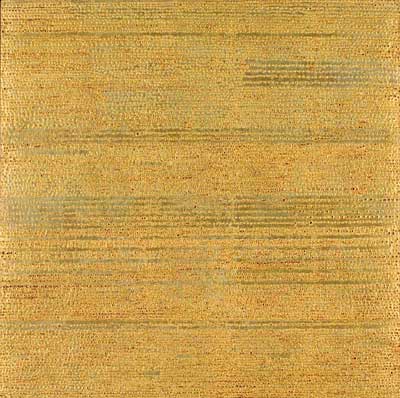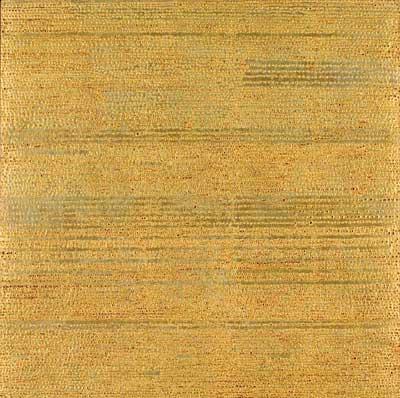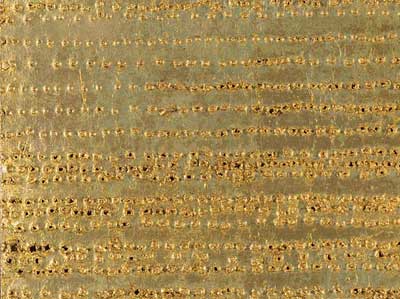Some of my favorite contemporary works on view at LACMA aren't inside BCAM; they're part of the Latin American art galleries, which includes some stunning work of the last fifty years from Jésus Rafael Soto, Hélio Oiticia, Cildo Meireles, and Francis Alÿs.
My personal favorite in the gallery is Message (Mensaje), from 1967, by Mathias Goeritz, who was German-born, but spent the last forty years of his life in Mexico. The work—just a piece of gold, punched metal—rewards patience.

Mathias Goeritz, Message (Mensaje), 1967
At first I thought it looked almost like a textile; seeing it in print (or onscreen) heightens that feeling. But the punches in the steel give it a kind of topography. Then I started wondering about how those holes were punched: rigid horizontal lines across the panel, the density of the lines letting up in places—it's composed. Yet there is also a kind of randomness created by how the metal was punched: in some places it has been completely punched through, creating tiny black voids all over. If you get up close enough you can see the burgundy-colored wood peeking through.
The longer I stare, the more colorful Message becomes. It's really not "just gold"; in addition to the black pockmarks, the leafing has taken on a bruiselike shade of greenish purple, revealing itself in the few areas of the surface that haven't been disturbed by the punches. I start to notice cracks in the gilding, like spider cracks in damaged sidewalks. I wonder how much of Message is a result of its age. Was it more uniformly gold when Goeritz first created it? Was it even more luminous than it is now? What qualities has it taken on in the last forty-one years? What qualities will take on in the next?




